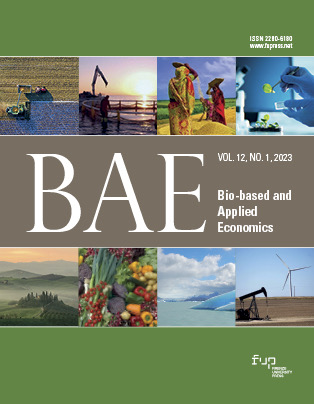Heterogeneity of adaptation strategies to climate shocks: Evidence from the Niger Delta region of Nigeria
Published 2023-05-15
Keywords
- Climate shocks,
- crop farmers,
- Fish farming,
- Adaptation strategies,
- Developing nations
How to Cite
Copyright (c) 2023 Chinasa Sylvia Onyenekwe, Patience Ifeyinwa Opata, Chukwuma Otum Ume, Daniel Bruce Sarpong, Irene Susana Egyir

This work is licensed under a Creative Commons Attribution 4.0 International License.
Abstract
There is overwhelming evidence to suggest that climate shocks undermine food security and livelihood well-being of the climate-impacted Niger Delta region of Nigeria. Employing survey data collected from farming and fishing households in the Niger Delta region of Nigeria, the study investigated the range of adaptation practices prevalent in the region, as well as factors influencing the adoption of these adaptation strategies. Five hundred and three (503) households (252 fishing households and 251 farming households) were selected using multi-stage sampling techniques. Multinomial logit model was used to determine factors affecting the household choice of adaptation strategies. The results show that adaptation strategies adopted by farming households were livelihood diversification (78.5%), crop management (77.7%), and soil and water management (64.5%). Factors influencing their choice of adaptation strategies were age, gender, household size, education, extension, and farm size. The adaptation strategies employed by the fishing households were livelihood diversification (83.61%) and intensification [which include the use of improved fishing gears (80.33%), varying fishing locations (67.21%), and expanding area of fishing (40.98%)]. Uncovering the heterogeneity in adaptation and resilience aspects to climate shocks has immense practical significance, particularly in providing targeted assistance for the two livelihood groups’ adoption.






